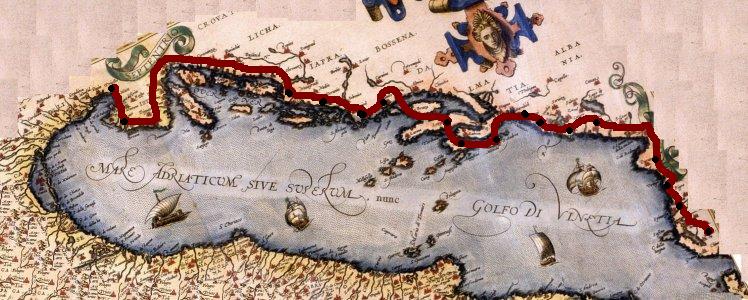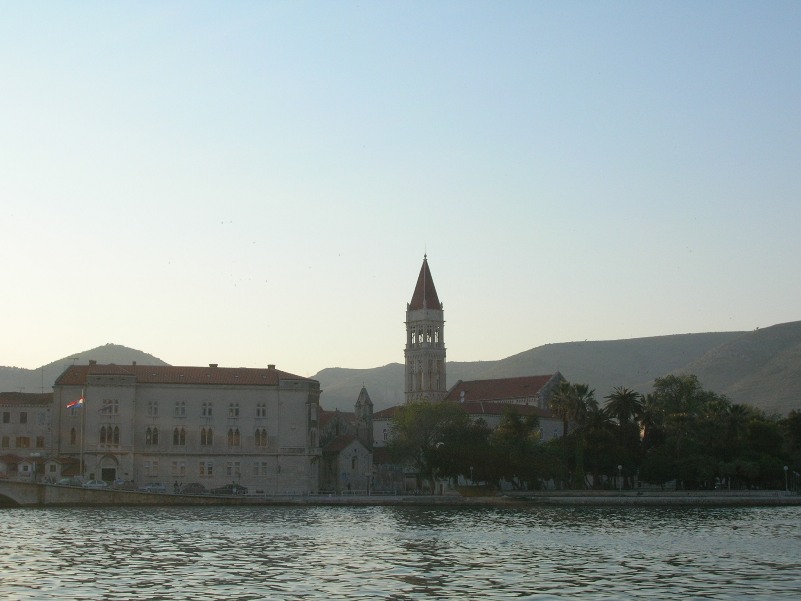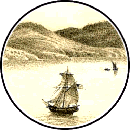The Pilgrim's Diary (15th Century)

|
On the 15th May 1494, during the Easter period (known at the time as Pasqua Rosata), Pietro Casola left his city, to begin what was to be a very long journey. He had wanted for sometime to go on a pilgrimage to Jerusalem, and so finally he decided to leave, in order to live with great enthusiasm a new chapter of his life. Taken from the notes written in his diary, we are able to discover about the main points of his trip which have not been neither confused with nor lost in the experiences of thousands of other human beings. Casola has carved in stone for always his memories, consisting of manuscripts, later to be found by an 18th century academic, gathering dust in a library, the “biblioteca patrizia milanese.”
|
|
Extracted from the diary was all the evidence to support the existence of a “journey within a journey” of the first indisputable sketch which in itself constitutes the experience of “the Adriatic Journey”.
This itinerary proposes to follow in the tracks of a journey made by someone who not only had an immense love of life but who went on a curious pilgrimage.
|
VENICE, PLACE OF S.MARCO, ENGRAVING OF 1490
|
|
PANORAMA OF VENICE, 15TH CENTURY,
GALLERIE VATICANE
|
It is possible to make this journey by sea, even if you do not possess a boat, as in the original journey, as it is possible to hire a boat from many of the different companies that are available, who organise Adriatic cruises, but the journey would be just as interesting made by car, along the coast, with the possibility of integrating inland places, discovering charming points of interest, with the use of local ferries in order to visit the islands along the coastline.
We find ourselves face to face with the first ever historical experience of “a package tour” but with all the added risks and adventures.
Armed private galleys left from Venice, under close control of the “Serenissima”, (at the time Venice was ruled by the Serenissima) transporting pilgrims to Jaffa, where they were received by monks of the order of St Francis, who would in turn take the pilgrims to sacred places of interest and negotiate on their behalf with the Arab world.
The Adriatic Journey, however, takes place in familiar places, between friendly coasts, and with recognised participants and common civility.
|
Casola embarked in Venice, and sailed along to the Gulf of Trieste ( where we propose the first leg of the itinerary, a slow route by car, in order to make the most of the spectacular views along the way), reaching Parenzo (Porec) in Istria.
On the 8th June our pilgrim arrived in Jadra (Zara, Zadar):
“Sunday the 8th June, thanks be to god at the 11th hour, we arrived in Zarra… and with great delight, came many boats, we all gathered together and went to hear the mass and then we …”.
|
POREC, BASILICA OF EUFRASIO
|
|

ZADAR, VIEW BY THE SEA
|
|
ZADAR, GATE TERRAFERMA
|
Within its high surrounding walls which seem to be a fortress, Zara appears to be a happy city, which is well built and well paved:
“it is fairly flat, but very clean and it has beautiful buildings…it has high and beautiful surrounding walls, a newly built castle on one side, a veritable fortress…All of the city is paved in tiles, in a certain way like those of Milan, they say that those have gout of the foot, and are unable to perambulate very seemly”.
|
|
Casola revealed the square shaped piazza ("it is square in shape, a useless place where ministers reason for the obverse") but it was the many churches which particularly caught his eye, for example the convent of Saint Francis, the Benedictine Abbey of San Grisogono, the Cathedral (Sv. Stošija):
“I have visited their Cathedral, named after Saint Anastasias, it is a fine body of a church, very high and in the shape of a galley, all long and rounded, made in the finest wood, by the finest of masters, a waking Testament.”
|
ZADAR, CATHEDRAL OF SAINT ANASTACIA
|
|
ZADAR, CHURCH OF S.SIMEONE
|
In another church, “de santo Symeone”, adorned with a silver arch, a present from one of the Queens of Hungary, after the vestry lies the remains of the body of the saint.
Stopped by the wind “scirocco” the galley set sail , navigating “with little Garbino”, between the numerous small islands of Croazia, which are in frontof Zadar and along the channel which is like a river. One meets rare habitations between the rocks, where you can buy goats, typical meat of the place.
|
After Sebenico (Sibenik) and the fear of running aground,due to the coming and going of boats, lack of wind, one can touch many islands S.Andrea, at the time uninhabited and wild, Lissa (Vis) famous for its wines, famous for the preparation and the selling of sardines, and on the left hand side one passes in front of Trau (Trogir) and Spalato (Split).
|
|
SIBENIK, PANORAMA OF THE HISTORICAL CENTRE AND THE CHURCH OF S.GIACOMO
|
TROGIR, THE TOWER OF THE CLOCK (1447) AND THE PUBLIC LOGGIA (1308)
|
SPALATO, PALACE OF DIOCLEZIANO (305 B.C.)
|
“Lesna… is situated on top of two mountains, one higher than the other. But that which is lower I believe to be older and it is called Fara, because there the church is Episcopal …and called Saint Stephen".
|
LESINA, CATHEDRAL OF S.STEFANO
|
|
LESINA, ANCIENT RECOSTRUCTION
|
|
LESINA, THE OLDEST EUROPEAN ANPHITHEATRE
|
The city seems to be of a triangular shape, well defended by a great port, and on other two sides there are mountains. At the top on the left, there is a castle, which seems to guard and protect the city on the horizon. Meals are frugal, but the wine is free flowing. There is a monastery, Saint Maria delle Grazia (Gospa od Milosti), highly recommended by sailors during a storm:
“…above there is a white “saxo” and if you want to build any buildings it is necessary to excavate this “saxo”.
|
But there is also Corzula (Korcula), the island who had a few years previously heroically defended itself ( especially with the help of the women), the King of Naples’ army, and it succeeded in having the admiration of all the travellers:
“…joyfully at Corzula, a small city of Dalmazi, as pretty as a picture...the first low lying, but on entering one climbs all the streets which all look the same. They are all dark and narrow, but of a light stone, all built in a modern way...in white stone, like cut marble, for me it seemed to be the most marvellous of houses”.
|
KORCULA, VIEW BY THE SEA
|
Wine here, is also good and in plentiful supply, the vines are also numerous, Casola consumed a snack fit for a king, with warm bread, soaked in good wine, with dry figs and grape puree.
Continuing our journey, between Melida (Mljet), a charming island renown for its honey, and Stagno (Ston), the city of salt, in which one can catch sight of a bell tower.
|
|
MELEDA, PANORAMA
|
STAGNO, THE BEAUTIFUL WALL
|
|
THE ANCIENT MAP OF RAGUSA
|
It was the sale of salt that gave Ragusa (Dubrovnik) its wealth, a neighbouring city, the next leg in Casola’s journey:
“and so continuing our journey, with a good wind, we reached Ragusa, city of Dalmazia at the 20th hour and made the climb, with triumphant flags and bombardment signals and trumpets, running alongside the people of Ragusa, above the banks of the port, and seeing many boats and galleys with their pilgrims… So this is how we disembarked t and went with great desire to refresh ourselves in the deign of the city of Ragusa”.
|
|
Both the sailors and the pilgrims were in a hurry, to get to the great market in the city’s main square, place where the West exchanged things from the East, and vice versa, to relax and enjoy discovering the streets and the views which attracted them. Even today the city has its streets, its intricate architecture, its palaces mirrored throughout the Adriatic, views of the coast and of the islands, small markets where Oriental objects can still be bought, and the beaches which are still in easy reach.
|
DUBROVNIK, THE STRADUN
|
|
DUBROVNIK, THE CATHEDRAL
|
His diary dedicated many pages and we would like to advise you to read the complete version for those who want to cover his tracks, to relive the crispness of the sensations, to taste the discovery of these places and their peoples, an original experience of a journey, in a time when travelling was considered both risky and dangerous, an adventure in a new world, without preconceived notions, pleasures and marvels, something that can never be recuperated, and if we subtract all that, we are left with all that is predictable in travelling, all those organised packages, which take away from society, the emotions, the thoughts and the life out of travelling:
“Ragusa, in Dalmazia, is Schiavona,beautiful in every way, situated above the shore of the sea, with its strong walls, precipitating towards the land, bigger than the others. Mounted on walls…From those towers one could see everything worth seeing of that afore mentioned city.”
|
|
Lets retrace the steps of our pilgrim walking along those city walls, lets stop with him and see everything through his eyes, from the highest tower, the panorama of the city, observing everything, measuring with interest the stratifications and the what has been added to the urbanistic view of things, when compared to the original:
“To me it seems to be a triangular shaped city, from one side thee is the sea, from the other dry land, a high mountain, and in the middle it is flat. A street begins and enters the port, going along until it reaches a monastery of Saint Francis.
|
RAGUSA, MAP OF XII CENT
|
|
DUBROVNIK, THE FOUNTAIN OF ONOFRIO
|
To me it seems to be a triangular shaped city, from one side thee is the sea, from the other dry land, a high mountain, and in the middle it is flat. A street begins and enters the port, going along until it reaches a monastery of Saint Francis. From one side to the other said street, there are shops of every type. Their houses have a good aspect, the churches even better…Our lady, and from the outside all in white stone, like marble, with a supply, made in a beautiful column for those who want to go in search of churches in this afore mentioned city".
|
|
Castles, convents the castle outside the city on a mount facing towards the sea, streets and squares, especially the convent of St Francis, which surprised him by the type of welcome they received, struck also by the beautiful architecture and art, like the statues in silver and gold, the cloister, the five stupendous miniature volumes of Salterio, the gardens and terraces, abundant with plants, fruit trees and flowers, according to the Adriatic/Mediterranean style:
“It has among other things three gardens, one higher than the other, we climbed eight steps, with walls made of granite and other things, surrounding all of the convent”.
So once again Casola visited the Benedictine Monastery of Santa Maria, situated on a cliff on a small island on the out skirts of the city (Lokrum), locus amoenus, according to literary tradition, said of places considered to be of outstanding beauty, with their gardens touching the sea.
The men appeared to be handsome and polite to the travellers, the women beautiful, with bejewelled and expensive dresses, with gold and pearls, walking confidently around the streets. The city is full of rich buildings, like that of the government with the ceiling of its salon blue and gold, it has an arsenal, a fresh water canal which supplies water to watermills and the public fountains, to St Francis and in the square, with numerous “bochelli” and jets of water.
|
|
In the surrounding area going towards dry land , there are many villas with gardens, “to go in the shade”, or just for the pleasure of relaxing, based on Venetian design ,with vineyards for an excellent production of “malvasie”,("the best of that type", according to Casola), “good vermegli wines”, red and full bodied which are still produced, and are a very good buy.
Given the big flow of tourists, instead of pilgrims, to the city, today as before, fruit and honey from the surrounding countryside still flows in (there was also the development of wax and its other side lines/ crafts) .
|
ISLAND OF LOKRUM, PANORAMIC VIEW
|
|
TREBINJE, THE CATHEDRAL
|
Around the area we suggest that you expand on the itinerary , going towards the borders of Croatia immediately after Dubrovnik, to the forest of Erzgovina, to the mountains which go to depths of old Ragusa, making a leg of about twenty minutes by car, to Trebinje,in Bosnia Erzegovina. In the cheerful cafés under centuries old plantain trees or along the river that runs alongside the Turkish citadel, you can check out a map and plan a stopover.
|
|
Here time seems to have stood still, the lack of development, as turned it into a powerful resource, of keeping everything under control., for example it s growing organic agriculture, with its antique traditions of bee keeping and fishing in the lake.
Immediately opposite the beaches of Croatia and Montenegro, and reachable in a very short time, you can find yourself in the middle of lakes and forests, where in the mountains (if you do not prefer the small and inexpensive hotels of Trebinje and other towns) you can hospitality in houses of the country people and fishermen who fish the fresh water lakes, where in the heart of a family you can take part in the homemade production of cheese, wine, honey, brandy and fishing.
|
TREBINJE, THE ANCIENT BRIDGE
|
|
TREBINJE, PANORAMA
|
These house are not situated in large urban groups, in fact they are dotted around in a way that offers a certain freedom and tranquillity to their guests. Thanks to an absolute lack of heavy industry, the area remains intact and pollution free, in fact there are some freshwater springs where the local population live by an exchange of water.
In addition to trekking, one can simply take walks along canyons excavated by rivers or collect forest fruits typical to the local flora. It is also possible to stay in local Catholic and Orthodox monasteries, and visit the mosques, which bear witness to the eastern architecture left by the Ottoman domination.
|
But coming back to our pilgrim, lets move with him, after the spectacular view of Bocche di Cattaro and of Budua (Budva),to Antivar (Bar), with its charming hamlet and to Dulcino (Ulinj) in Montenegro, to the shelter of Lake Shkoder (Scutari) “what types of terrible fish, enormous eels of immense sizes”, we propose a visit to the with the same name city, for its beauty and coastlines, Scutari, dominated by its castle, where one can enjoy the picturesque view of the city, which still exhibits its old ties with Venice, with its Venetian centre and mask making industry which are possible to visit. However, it is necessary instead to request permission to visit the photographic archive of Marrubi, which documents the antique customs of an Albania of the past. From Scutari, moving as always with Casola we can go to the island of Sasino (Sazan) in front of Vlore, where we can visit the ruins of old Aulon ( if you want to move inland , it is possible to visit interesting archaeological sites of Apollonia to the north and to the south in neighbouring Argirocastro (Gjirokaster) and this is where we terminate our Adriatic journey, for the pilgrims were now headed for Palestine.
|
BUDVA, VIEW OF THE HISTORICAL CENTRE
|
|
BUDVA, REPRODUCTION OF 1572
|
|
|
|
|

clicca sull'immagine per aprire la mappa attuale
 |
|